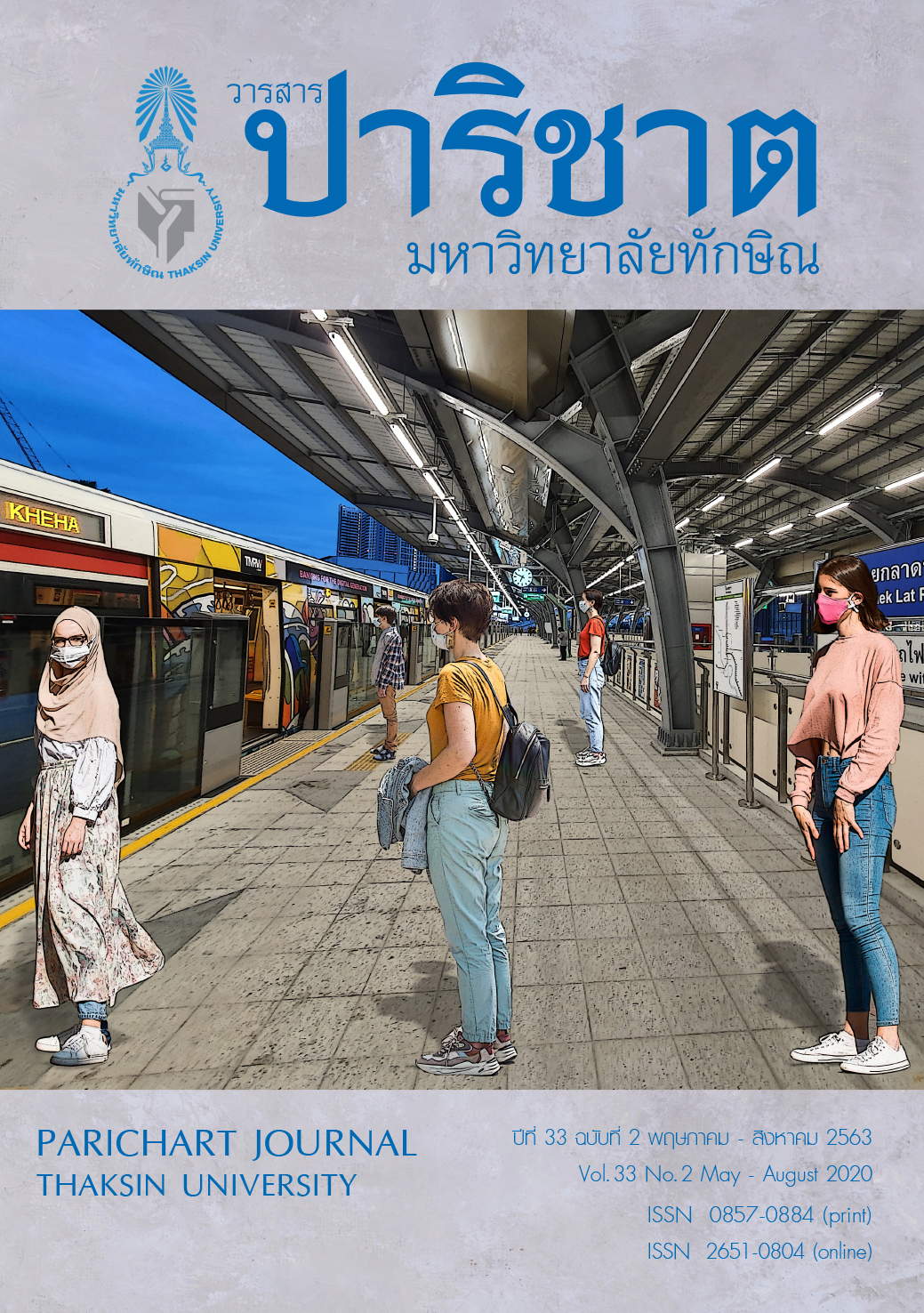Negrito Ethnic Music In Malaya Peninsula: History and Music interaction
Main Article Content
Abstract
This research article on “Negrito Ethnic Music in Malay Peninsula” aims to study the
background of the music of Negrito people who are living in the Northern region of Malaysia
and the Southern region of Thailand. The research was conducted by field studying for
interviewing the target group which is 20 musicians and 20 persons and authorities, and
studying from academic documents to present in the form of a qualitative research from the
study results, it was found that the roles of the Negrito ethnic music were related to rituals,
spiritual beliefs, worshiping the forest for food abundance and the music generally sung for
entertainment. Most of the music contents reflected the way of life and gratefulness to the
forest. The characteristics of the music has a single-rhythm music form with natural-minor
and pentatonic sound systems. There were six musical instruments found including Bataz
(Bamboo Tube Zither), Mong Mood (Music Bowe), chen Tung (Bamboo Stamp), Ya-Ngong
(Jaw’s Harp), Klong Bung (Bamboo Percussion) and Pensol. At present, Negrito ethnic music
has been developed to be performing arts for tourists or celebrations in various ceremonies.
Article Details
References
Carey, I. (1976). Orang Asli the Aboriginal Tribes of Peninsular Malaysia. Oxford: Oxford University Press.
Endicott, K. (2016). Malaysia’s Original People: Past, Present and Future of the Orang Asli. Singapore: National University of Singapore.
Evans, I.H.N. (1968). The negritos of Malaya. Malaysia: Psychology Press.
Duangchan, P. (1998). Word and Sentence in Sakai Language. Manutsat Paritat: Journal of Humanities. Srinakharinwirot University, 20(2), 47–61. (in Thai)
Benjamin, G. (2014). Temiar Religion, 1964-2012: Enchantment, Disenchantment and Re-enchantment in Malaysia’s Uplands. [n.p.]: NUS Press.
Pikulsri, C. (1999). Analysis of Thai Classic Music. Bangkok : Odeon store. (in Thai)
Miller, T.E., & Williams, S. (1998). The Garland Ensyclopedia of World Music. New York: Garland Publishing.
Rungruang, P. (2003). Foundation of Ethnomusicology. Bangkok : Kasetsart University. (in Thai)
Janerek, O. Jahai People. (Interview), Address: Banun Sub-district. Kedah. January 15, 2016. (In Malaysaia)
Dagege, A. Jahai People. (Interview), Address: Banun Sub-district. Kedah. October 5, 2018. (In Malaysaia)
Austef, B. Jahai People. (Interview), Address: Banun Sub-district. Kedah. September 7, 2016. (In Malaysaia)
Srithanto, J. Manniq People. (Interview), Address: Banrare Sub-district, Thanto district, Yala Province. September, 16 2016. (in Thai)
Srithanto, K. Manniq People. (Interview), Address: Banrare Sub-district, Thanto district, Yala Province. October 4, 2018. (in Thai)
Lomax, A. (1968). Folk Song Style and Culture. Washington : American Association for the Advancement of Science.
Winkelman, M. (Ed.). (2010). Shamanism and the Origins of Spirituality. Journal for the Study of Religion, Nature and Culture, 1(1), 120.
Sachs, C. (1940). The History of Musical Instruments. New York : W.W Norton.
Tylor, E.B. (1920). Primitive Culture: Researches into the Development of Mythology, London: John Murray.
Oppenheime, S. (2012). Out-of-Africa, the peopling of continents and islands: tracing uniparental gene trees across the map. Philosophical Transactions of the Royal Society B: Biological Sciences. Mar 19; 367(1590): 770–784.
Nettle, B. (1964). Theory and Method in Ethnomusicology. Illnois: Glencoe.


